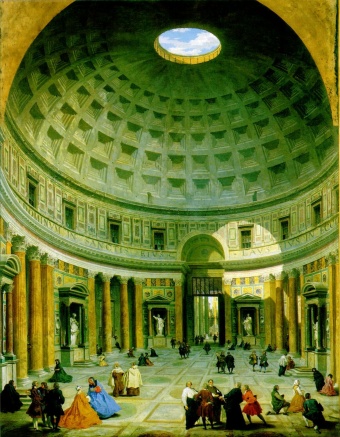Category:Structures
From crude huts to skyscrapers, civil, structural and architectural engineering have crucial roles role in how people live and work. With the construction of public and private spaces, humanity is able to shield itself from the elements, have places to exchange goods and ideas, and express themselves creatively through architecture. Many structural engineering achievements from the ancient world are still standing today, including the pyramids, Roman bridges and Greek temples. The Industrial Revolution led to both an increased need for urban development and the introduction of new construction materials, such as steel-reinforced concrete. These technologies had to be combined with other areas of engineering, such as transportation (elevators in skyscrapers), water treatment, and air conditioning. The late 19th and 20th century saw the construction of massive skyscrapers, hydroelectric dams generating power from large reservoirs and massive roads bridges carrying tens of thousands of automobiles a day.
Subcategories
- Architectural engineering - The application of engineering methods to the design of buildings
- Bridges - Structures designed to allow transportation over valleys, bodies of water or otherwise impassable terrain
- Cellular structures - Structures of a biological nature
- Composite and other non-traditional material structures - Structures composed of multiple or unorthodox materials
- Concrete & masonry structures - Topics dealing with structures composed of cement and stone materials
- Construction - Building structures for residential, commercial, or industrial use
- Continuous structures - Structures supported by three or more supports
- Diversion structures - Structures which route runoff water to minimize flooding damage
- Elevated structures - Topics pertaining to concerns regarding structures lifted above the ground
- Locks - Structures which elevate boats on rivers
- Metal structures - Topics pertaining to structures built from metals
- Planning & development - Issues related to the design of structures
- Special structure types - Categories pertaining to unique structures
- Structural controls & monitoring - Various topics related to the monitoring and control of structural integrity
- Structural design loads - Topics related to structural engineering concerns regarding excessive loads and weight being placed on a structure
- Structural dynamics & wind engineering - Topics related to load and insuring structural integrity in the presence of high winds
- Tall buildings - Concerns regarding skyscrapers and other large multistory buildings
- Transmission towers - Structures built for the purpose of transmission of radio or television signals
- Wood structures - Structures composed of wooden materials
Subcategories
This category has the following 19 subcategories, out of 19 total.
B
C
L
S
Pages in category "Structures"
The following 12 pages are in this category, out of 12 total.
R
Media in category "Structures"
This category contains only the following file.
- PSE&G Substation.jpg 1,848 × 1,134; 371 KB

